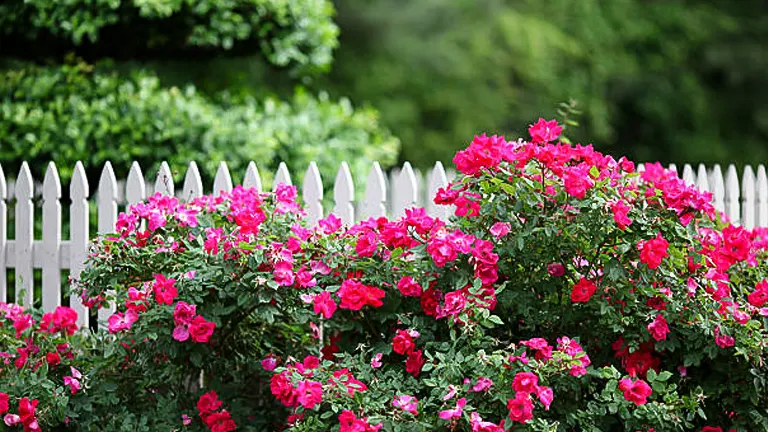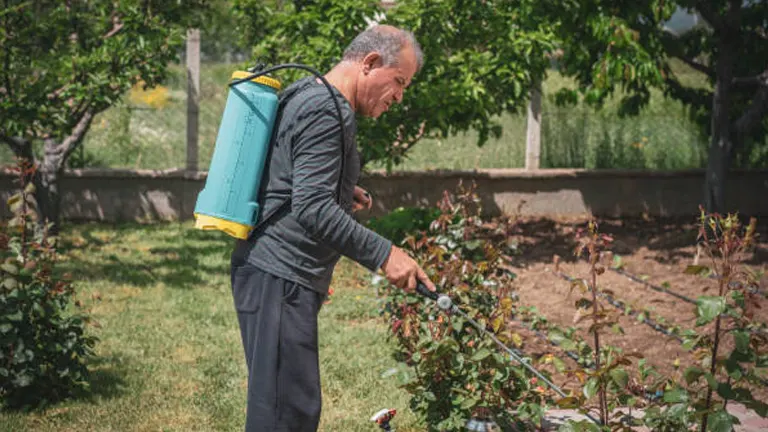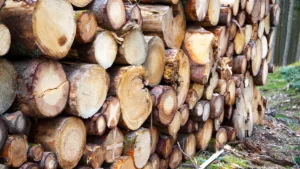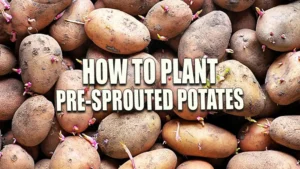How to Fertilize Roses for Optimal Growth and Vibrant Color
- February 21, 2024
- 0 comment
Learn how to fertilize roses for optimal growth and vibrant color. Discover the best techniques and nutrients for thriving, beautiful blooms. Roses symbolize beauty, love, and passion, gracing gardens with their vibrant colors and enchanting fragrances. Achieving such splendor requires more than just planting and watering; it necessitates a comprehensive understanding of rose care, particularly in fertilization.
This article embarks on a journey to explore the nuances of fertilizing roses, aiming to empower gardeners with the knowledge to foster optimal growth and luminous color in their blooms. By adhering to scientifically-backed practices, we can ensure our roses flourish, captivating onlookers and enhancing our gardens’ allure.
List of Guides on How to Fertilize Roses
Understanding Rose Nutrition

Roses, with their demands for a nutrient-rich environment, offer a fascinating case study in plant nutrition. Their health, growth rate, and bloom quality directly correlate with the availability and balance of specific nutrients. Let’s delve into the nutritional needs of roses, exploring both well-known and lesser-discussed elements that contribute to their optimal development.
The NPK Ratio
Nitrogen (N), Phosphorus (P), and Potassium (K) form the cornerstone of rose nutrition, each playing a pivotal role:
- Nitrogen (N): Essential for the synthesis of proteins and chlorophyll, nitrogen drives vegetative growth. Optimal levels lead to robust, green foliage, a critical factor in photosynthesis and the plant’s energy production. A deficiency manifests as yellowing leaves, while excess nitrogen can inhibit flowering.
- Phosphorus (P): Phosphorus is crucial for energy transfer within the plant, root development, and the formation of DNA and RNA. It’s a key player in bloom formation and seed production. Low phosphorus can result in stunted growth and fewer blooms.
- Potassium (K): Known as the “quality nutrient,” potassium regulates the opening and closing of stomata, aiding in water and nutrient movement. It strengthens plant tissue, enhancing resistance to disease and stress. Insufficient potassium often leads to weak stems and vulnerability to disease.
Secondary Nutrients and Micronutrients
While NPK grabs the spotlight, secondary nutrients and micronutrients are the unsung heroes of rose health:
- Calcium (Ca): Integral to cell wall structure, calcium ensures strong cellular integrity and growth. It also plays a role in enzyme activity and signal transduction.
- Magnesium (Mg): The central atom of chlorophyll, magnesium is vital for photosynthesis. It assists in enzyme activation and the movement of phosphorus within the plant.
- Sulfur (S): A component of amino acids and vitamins, sulfur is involved in protein synthesis and contributes to the plant’s defense mechanisms.
Micronutrients like Iron (Fe), Zinc (Zn), and Manganese (Mn), though needed in trace amounts, are critical for plant metabolism, chlorophyll synthesis, and the activation of various enzymes.
Nutrient Requirements for Roses
| Nutrient | Role in Rose Health | Optimal Soil Concentration | Impact on Roses |
|---|---|---|---|
| Nitrogen (N) | Vital for chlorophyll production and vegetative growth. | 150-200 ppm | Ensures robust, green foliage; deficiency leads to chlorosis (leaf yellowing). |
| Phosphorus (P) | Crucial for energy transfer, root development, and bloom formation. | 30-50 ppm | Promotes large, vibrant blooms; low levels result in stunted growth and fewer flowers. |
| Potassium (K) | Regulates water uptake, enhances stress resistance, and improves flower quality. | 200-250 ppm | Strengthens plant tissues, increasing resilience to pests and diseases. |
| Calcium (Ca) | Integral to cell wall structure and enzyme activity, affecting overall plant stability and growth. | 100-200 ppm | Prevents blossom end rot and improves cellular strength; deficiency leads to weak growth and leaf curl. |
| Magnesium (Mg) | Central component of chlorophyll, facilitates photosynthesis and enzyme activation. | 50-100 ppm | Critical for energy production; magnesium deficiency manifests as interveinal chlorosis. |
| Sulfur (S) | Participates in amino acid formation, chlorophyll synthesis, and metabolic functions. | 30-50 ppm | Supports vigorous plant growth and disease resistance; deficiency can cause leaf yellowing. |
| Iron (Fe) | Essential for chlorophyll formation and enzymatic processes involved in energy transfer. | 100-200 ppb | Key for dark green leaf coloration; iron deficiency is characterized by chlorosis in young leaves. |
| Zinc (Zn) | Influences hormone production, stem growth, and leaf formation. | 30-50 ppb | Necessary for plant development; zinc deficiency leads to stunted growth and leaf distortion. |
| Manganese (Mn) | Involved in chlorophyll production, photosynthesis, and nitrogen assimilation. | 50-100 ppb | Facilitates crucial metabolic processes; deficiency can cause interveinal chlorosis and reduced growth. |
Note: ppm = parts per million, ppb = parts per billion. These concentrations are indicative and can vary based on factors like soil type, rose variety, and current soil health. Regular soil testing is recommended to tailor nutrient management to specific needs.
Types of Rose Fertilizers
While navigating the world of rose fertilization, gardeners often encounter a diverse range of products, each promising optimal growth and vibrant blooms. Beyond the basic distinction between organic and synthetic, or slow-release and liquid forms, it’s essential to understand the specific benefits and applications of each to make informed choices.
Organic Fertilizers
Organic fertilizers, derived from natural materials, play a dual role in nourishing roses and supporting soil health. They release nutrients slowly, mimicking the natural soil nutrient cycle, which promotes sustained growth over time. Key advantages include:
- Soil Structure Improvement: By adding organic matter to the soil, these fertilizers enhance its porosity, which improves air and water movement.
- Enhanced Microbial Activity: Organic materials provide food for beneficial microbes, which in turn make nutrients more available to plants.
- Sustainable Practice: Using organic fertilizers supports environmentally friendly gardening by reducing chemical runoff and building soil organic matter.
Common organic fertilizers include:
- Fish Emulsion: Rich in nitrogen, it’s great for leaf growth.
- Seaweed Extract: Supplies a broad range of nutrients and trace elements, promoting both health and stress resistance.
- Composted Manure: Provides a balanced nutrient profile and improves soil texture.
Synthetic Fertilizers
Synthetic fertilizers are formulated to offer a precise nutrient balance, capable of addressing specific deficiencies quickly. They are particularly favored for their rapid action and ease of use:
- Targeted Nutrient Application: Formulations can be adjusted to meet the exact nutritional needs of roses at different growth stages.
- Quick Nutrient Availability: Water-soluble and liquid forms provide immediate nutrient access to plants, useful for addressing deficiencies swiftly.
- Ease of Use: Pre-measured and easy to apply, synthetic fertilizers reduce the guesswork in fertilization schedules.
However, the use of synthetic fertilizers requires careful management to prevent potential issues like nutrient leaching and salt buildup, which can harm plant roots and soil microbiology.
Comparative Analysis of Rose Fertilizers
To facilitate a better understanding, here’s a comparative table highlighting key aspects of organic vs. synthetic fertilizers:
| Aspect | Organic Fertilizers | Synthetic Fertilizers |
|---|---|---|
| Nutrient Release | Slow and gradual, mimicking natural processes. | Rapid, offering immediate nutrient availability. |
| Impact on Soil Health | Improve soil structure and microbial activity. | Potential for salt buildup; minimal impact on soil structure. |
| Environmental Sustainability | High, due to natural sourcing and biodegradability. | Lower, due to chemical manufacturing and potential for runoff. |
| Ease of Use | Generally requires more frequent application and monitoring. | Convenient, often with precise application instructions. |
| Cost | Can be higher initially but improves soil health over time. | Typically lower per application but may require additional soil amendments. |
Choosing the Right Path for Your Roses
The decision between organic and synthetic fertilizers should be informed by your gardening goals, the specific needs of your roses, and your commitment to environmental sustainability. By understanding the science behind each option and how it affects rose health and soil ecology, gardeners can tailor their approach to achieve vibrant blooms while nurturing the garden ecosystem.
Remember, the best fertilization strategy often involves a balanced approach, combining the long-term benefits of organic amendments with the precision and quick action of synthetic products when necessary. Regular soil testing and observation of your roses’ response to fertilization will guide you in fine-tuning your approach for optimal growth and bloom vibrancy.
Proper Planting and Spacing for Roses
Planting Depth and Spacing

The planting depth and spacing for roses are determined by several factors, including the variety’s root system size, growth habit, and the ultimate size of the plant. These considerations directly impact the plant’s ability to absorb water and nutrients and resist diseases.
- Planting Depth: Ensure the graft union (the swollen area where the cultivar is grafted onto the rootstock) is positioned 1 to 2 inches below the soil surface in colder climates to protect it from freeze damage. In warmer climates, positioning the graft union at or slightly above soil level can prevent diseases from taking hold in moist conditions.
- Spacing Between Plants: Adequate spacing is crucial for air circulation and sunlight penetration, reducing disease risk and promoting healthy growth. The recommended distance varies:
- Miniature Roses: 12 to 18 inches apart.
- Shrub Roses: 24 to 36 inches apart.
- Climbing Roses: 4 to 8 feet apart, depending on the vigor of the variety.
Row Spacing and High-Density Cultivation
For gardeners and farmers practicing medium to high-density rose cultivation, strategic row spacing is vital for operational efficiency and plant health.
- Row Spacing: Maintaining 4 to 5 feet between rows optimizes air flow and sunlight exposure, crucial for minimizing disease pressure and promoting uniform growth across the garden or farm.
Adapting to Soil Types and Climatic Conditions
Different soil types and climatic conditions necessitate adjustments to planting techniques to ensure roses’ health and longevity.
- Soil Type Adjustments:
- Clay Soils: Elevate planting beds or amend with organic matter to improve drainage.
- Sandy Soils: Incorporate organic matter to enhance moisture and nutrient retention.
- Climate Considerations: Adjust the planting depth based on local winter temperatures and summer humidity levels to protect the graft union and encourage deep root development.
Rose Planting Guidelines
| Aspect | Recommendation | Purpose | Notes |
|---|---|---|---|
| Planting Depth | 1-2 inches below soil in cold climates; at/slightly above in warm climates | Protect graft union; encourage healthy root development | Adjust based on local climate |
| Spacing Between Plants | 12-36 inches, based on variety | Ensure air circulation and disease prevention | Miniatures need less space than shrubs or climbers |
| Row Spacing | 4-5 feet | Optimize maintenance access and environmental conditions | Essential for high-density planting |
| Soil Type Adjustments | Amendment based on soil type | Improve soil structure for water and nutrient management | Organic matter is key in both clay and sandy soils |
| Climate Adaptations | Depth and mulching adjustments | Protect against weather extremes; maintain moisture | Consider local weather patterns for best practices |
When to Fertilize Roses

The art of rose cultivation extends significantly into understanding and implementing a fertilization schedule that aligns perfectly with the physiological needs of these exquisite plants. Let’s delve deeper into the nuances of timing, environmental considerations, and practical tips to ensure your roses receive the optimal level of nutrition throughout their growing season.
Early Spring (As New Growth Emerges)
- Timing: Begin your fertilization regimen when you notice the first signs of new growth, typically as the soil begins to warm in early spring.
- Objective: Kickstart the growth cycle by providing a balanced NPK fertilizer to support foliage and root development.
Late Spring to Early Summer (Peak Vegetative Growth and First Blooms)
- Timing: Continue with monthly or bi-monthly applications, depending on the product’s formulation and the specific needs of your plants.
- Objective: Support burgeoning growth and the development of the first blooms with a higher phosphorus content to encourage vibrant flowers.
Summer (Ongoing Bloom Production)
- Timing: Maintain regular fertilization but adjust the formulation if necessary to promote sustained blooming and healthy foliage.
- Objective: Ensure roses have enough potassium to support bloom quality and disease resistance through the hotter months.
Early Fall (Preparation for Dormancy)
- Timing: Conduct the last fertilization at least 6 weeks before the expected first frost to prevent new growth that cannot harden off in time.
- Objective: Prepare the roses for winter by supporting root development and overall plant hardiness with a low-nitrogen, high-potassium fertilizer.
Environmental and Climatic Considerations
- Climate Zones: Adjust the timing based on your local climate zone; roses in warmer climates may start their growth cycle earlier and require an adjusted fertilization schedule.
- Soil Temperature: Fertilization should commence when the soil temperature consistently stays above 55°F (13°C), signaling active root function and nutrient uptake.
Practical Fertilization Tips
- Water Before Fertilizing: Ensure the soil is moist before applying fertilizer to prevent root burn and enhance nutrient absorption.
- Follow Manufacturer’s Guidelines: Pay close attention to the recommended application rates and intervals to avoid over-fertilization, which can lead to nutrient runoff and potential harm to the plants.
- Monitor Plant Response: Observe your roses’ response to fertilization and adjust the schedule or formulation as needed to address any signs of nutrient deficiency or excess.
How to Fertilize Roses
Step 1: Assess Your Soil
Before you begin the fertilization process, it’s essential to understand the starting point: your soil.
- Test Soil pH and Nutrient Levels: Use a soil test kit to measure the pH and existing nutrient levels. Roses flourish in slightly acidic to neutral soil, with an ideal pH range of 6.0 to 7.0.
- Adjust Soil pH If Necessary: If your soil is too acidic (below 6.0), apply garden lime to raise the pH. If it’s too alkaline (above 7.0), incorporate sulfur to lower the pH.
- Amend Soil Based on Test Results: Enrich your soil with organic matter or specific nutrients based on your soil test outcomes to ensure a fertile ground for your roses.
Step 2: Water the Soil
Properly moist soil is crucial for effective fertilization.
- Moisten the Soil: Lightly water the area around your roses if the soil is dry. This step is vital to prevent nutrient burn and facilitate nutrient absorption.
Step 3: Apply Fertilizer
Choosing the right fertilizer and applying it correctly can make all the difference in the health and vibrancy of your roses.
- Select an Appropriate Fertilizer: Choose a rose-specific fertilizer or a balanced NPK (Nitrogen, Phosphorus, Potassium) formula. Consider the specific needs of your roses and the current soil nutrient levels.
- For Granular Fertilizers:
- Measure the Correct Amount: Refer to the product’s instructions for the right quantity based on your rose bushes’ size and the soil area.
- Apply Evenly Around the Base: Distribute the granules in a circle around the base of the plant, avoiding direct contact with the stems and leaves to minimize the risk of burn.
- Incorporate into the Soil: Gently rake the fertilizer into the top inch of soil to help it blend in and reach the roots more effectively.
- Water Thoroughly: After application, water the area to help dissolve the granules and encourage deeper soil penetration.
- For Liquid Fertilizers:
- Dilute According to Instructions: Mix the liquid fertilizer with water as directed on the package.
- Apply to Soil or Foliage: You can either pour the diluted solution around the base of the plant to target the roots or use a sprayer to apply it to the leaves for foliar feeding, which can be especially beneficial for quick nutrient uptake.
Step 4: Monitor and Adjust
After fertilizing, observe your roses’ response over the following weeks.
- Watch for Signs of Improvement: Look for healthier, more vibrant foliage, and an increase in bloom quantity and quality.
- Adjust Fertilization as Needed: If you don’t see the expected improvement, consider re-testing your soil and adjusting your fertilization approach accordingly.
Step 5: Schedule Regular Fertilization
Creating a fertilization schedule helps maintain continuous nutrient availability for your roses.
- Fertilize at Key Growth Phases: Begin in early spring as new growth appears, continue through summer, and conclude in early fall to prepare your roses for winter.
- Tailor Frequency to Rose Needs: Depending on the fertilizer type and rose variety, you may need to fertilize anywhere from once a month to every six weeks during the growing season.
Application Methods and Safety Measures
The method of fertilizer application can significantly influence the health and bloom quality of roses. Beyond choosing the right type of fertilizer, understanding how to apply it effectively is crucial:
- Granular Fertilizers: Apply granular fertilizers around the drip line of the rose bush, which is the outermost circumference of the branches. This technique encourages roots to grow outward and access nutrients more efficiently. After application, lightly rake the fertilizer into the top inch of soil and water thoroughly to help the nutrients penetrate deeper into the root zone.
- Liquid Fertilizers: Liquid fertilizers are applied by watering the solution directly onto the soil around the base of the plant. For foliar feeding, spray the diluted solution onto the leaves. This method can be particularly effective for quick nutrient uptake, but it’s essential to follow the manufacturer’s dilution rates to avoid leaf burn.
Safety measures are paramount when fertilizing roses to prevent damage to the plants and the environment:
- Always wear gloves and protective clothing to avoid skin irritation.
- Follow the recommended application rates on the fertilizer packaging to avoid over-fertilization, which can lead to nutrient burn and damage the plant.
- Be mindful of the weather conditions, avoiding fertilization just before heavy rain, which can cause runoff and waste the fertilizer while potentially harming local waterways.
Pruning Techniques for Healthy Growth
Pruning is an essential aspect of rose care, promoting healthy growth and abundant blooms:
- When to Prune: The best time to prune roses is in late winter or early spring, just as the buds begin to swell. This timing helps stimulate new growth and flowering.
- How to Prune: Start by removing any dead or diseased wood, cutting back to healthy tissue. Thin out the center of the bush to improve air circulation. Make your cuts at a 45-degree angle, about 1/4 inch above a bud facing outward from the center of the plant. This encourages outward growth, enhancing the bush’s shape and health.
- Pruning for Shape and Size: Regular pruning helps maintain the desired shape and size of your rose bushes. It also removes weak or spindly canes that could detract from the plant’s vigor.
Troubleshooting Common Issues
Even with careful attention, roses can encounter problems. Understanding how to recognize and address these issues is key to maintaining healthy plants:
- Over-fertilization: Signs include yellowing leaves, leaf burn, and stunted growth. If over-fertilization occurs, water the plant deeply to help flush out excess nutrients. Avoid fertilizing again until the plant shows signs of recovery.
- Nutrient Deficiencies: Yellowing leaves or poor bloom production can indicate a lack of specific nutrients. A soil test can help identify which nutrients are deficient. Adjusting your fertilization regimen accordingly can help address these deficiencies and restore plant health.
Conclusion
The journey to cultivating vibrant and healthy roses is a rewarding endeavor that combines science with artistry. By understanding the nutritional needs of roses, selecting the appropriate fertilizers, and applying them with care, gardeners can significantly impact their roses’ health and vibrancy. Proper planting, spacing, and timely pruning further enhance the growth and bloom quality, ensuring that each rose bush reaches its full potential.
Remember, gardening is an ongoing learning process. Each rose bush may respond differently to care practices, influenced by its variety, the local climate, and soil conditions. Therefore, it’s essential to observe your roses closely, adjusting care practices as needed based on their performance and health.
FAQs
- What is the best time of year to start fertilizing my roses?
Begin fertilizing your roses in early spring, as new growth appears, signaling the end of the dormant period. Continue through the end of summer or early fall, ensuring to stop before the plant begins to prepare for dormancy to avoid new growth that can’t harden off before frost. - How often should I fertilize my roses for the best results?
Fertilize your roses every 4 to 6 weeks during the growing season. However, the frequency can vary based on the type of fertilizer used; slow-release formulas may require less frequent application compared to liquid fertilizers. - Can I over-fertilize my roses? What are the signs?
Yes, over-fertilization is a common issue. Signs include yellowing leaves, leaf burn, salt accumulation around the base, and stunted growth. If you notice these symptoms, flush the soil with water to dilute excess nutrients and hold off on fertilizing for a while. - What key nutrients do roses need to flourish?
Roses require a balanced diet of NPK (Nitrogen, Phosphorus, Potassium) along with secondary nutrients like Calcium and Magnesium and trace elements such as Iron, Manganese, and Zinc. Nitrogen promotes foliage growth, Phosphorus supports root and bloom development, and Potassium enhances overall health. - Is there a difference between organic and synthetic fertilizers for roses? Which is better?
Organic fertilizers, derived from natural materials, release nutrients slowly and improve soil structure over time, promoting a healthy ecosystem. Synthetic fertilizers provide nutrients quickly but can lead to salt buildup and harm beneficial soil organisms if used excessively. The choice depends on your gardening preferences and rose needs; both can be effective when used correctly. - How do I apply fertilizer to my roses without harming them?
Apply granular fertilizer around the base of the plant, avoiding direct contact with stems and leaves. For liquid fertilizers, follow the dilution instructions and apply to the soil or use as a foliar spray. Always water the plant before and after applying granular fertilizers to prevent root burn and help nutrients dissolve more efficiently. - How does the pH of the soil affect rose fertilization and color vibrancy?
Roses prefer slightly acidic to neutral soil (pH 6.0 to 7.0). Soil pH outside this range can hinder nutrient absorption, affecting growth and color vibrancy. Use soil amendments like lime to raise pH or sulfur to lower it, depending on your soil test results. - Can mulching affect how my roses absorb nutrients?
Yes, mulching can positively affect nutrient absorption by maintaining moisture levels, regulating soil temperature, and reducing weed competition. Organic mulches, such as compost or bark, can also break down over time, adding nutrients back into the soil. Apply a 2-3 inch layer of mulch around your roses, keeping it a few inches away from the stems to prevent rot.
As we wrap up, remember that the right nourishment is the secret to vibrant roses. Stick to these tips, and watch your garden come alive with color and vitality. Happy rose gardening!

Benjamin Brooks
Forestry AuthorGreetings! I'm Benjamin Brooks, and my journey over the past 15 years has revolved around the fascinating realms of content creation, expertise in snow clearing, and the intricate world of lumberjacking and landscaping. What began as a simple curiosity about the natural world and heavy machinery has evolved into a passionate profession where my love for crafting words intertwines seamlessly with my lumberjacking and garden skills.













Leave your comment